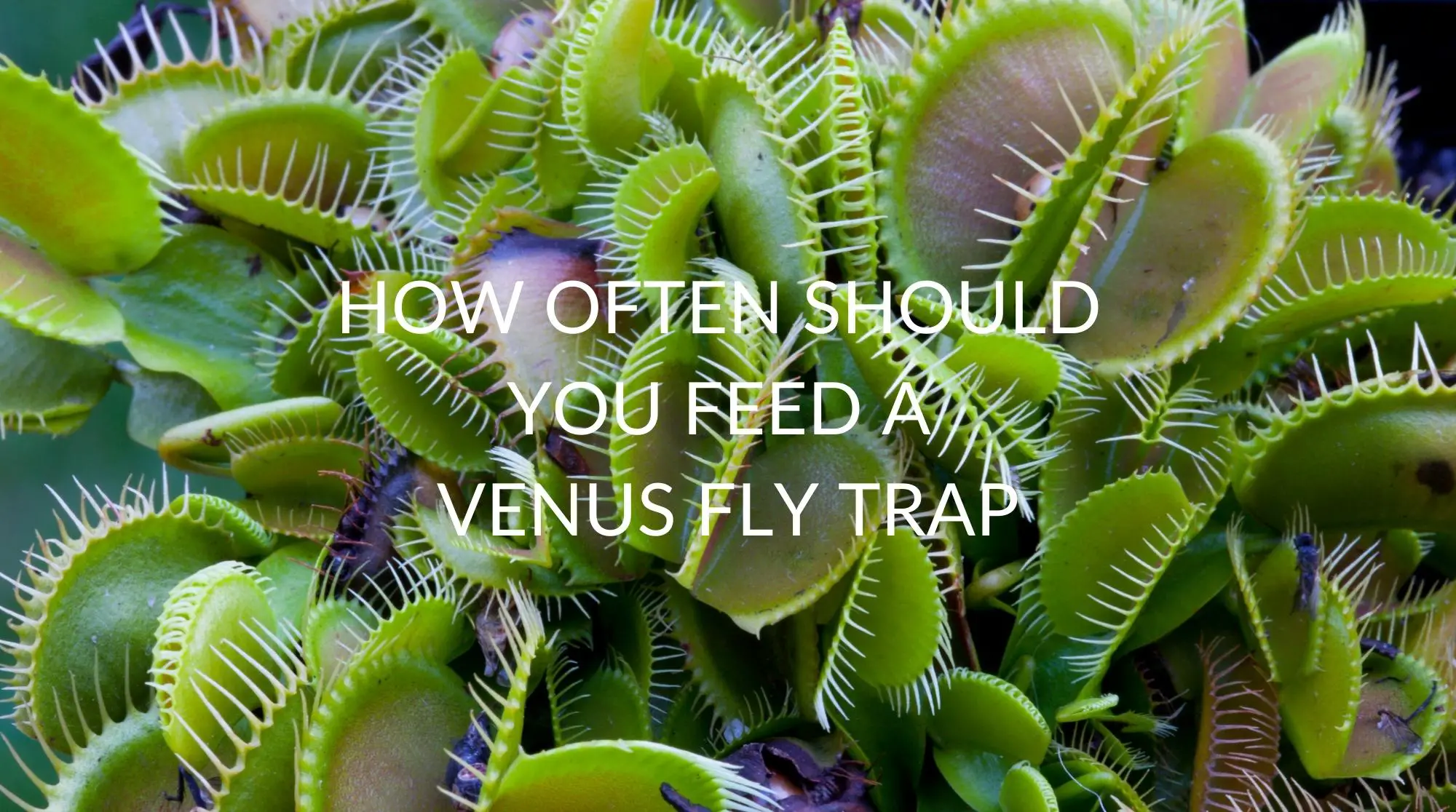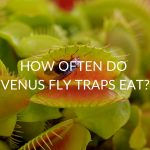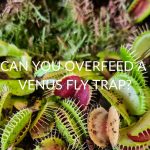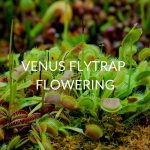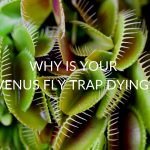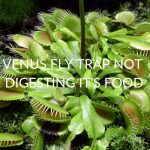A Venus flytrap makes a very visually intriguing plant, but it requires very particular conditions and feedings in order to keep it healthy. When creating a habitat for this unique plant, you’ve probably wondered to yourself; how often should you feed a Venus flytrap? Furthermore, what do you feed one of these peculiar flowers?
To ensure that you let your new plant thrive for as long as possible, there are some key points to know about how often to feed a Venus flytrap, as well as what you should and shouldn’t give your Venus flytrap to feast on.
How Often Should You Feed A Venus Fly Trap?
Feeding a Venus flytrap is a bit of a science. You should check your plant once a week to see if the mouths are open, signifying that that particular trap could be hungry. Each Venus flytrap should not be fed more than once a month. Some can even go longer without food, only needing food around four times a year.
Watching a Venus flytrap eat is very interesting and is a true display of how compelling nature can be. When a food source is inside their mouth, there are little tiny hairs that will tell them there’s food. Their mouth will then shut, and it will usually remain shut for about a week while they digest their food.
When you’re feeding your Venus flytrap, you want to make sure you gently massage the mouth before it closes in order to make sure their hairs get activated to munch down on their food. The Venus flytrap doesn’t have to be fed in Winter, as they naturally rest during the colder months to conserve energy.
Can You Overfeed A Venus Fly Trap?
There is a slight potential that you could overfeed a Venus flytrap. It’s more possible that you could feed it the wrong thing, causing it to rot. While it would be difficult to overfeed the Venus flytrap, it’s possible that your plant could die if it eats too much.
It’s important to ensure that, when giving your Venus flytrap food, the food only makes up for about one-third of the size of their mouth. If you give them something that is too big, it could lead to their mouth rotting, which will kill them.
If you grow Venus flytrap plants outside, you probably don’t have to worry about feeding them yourself. They are most likely going to catch as much food as they need on their own. They also don’t need any sort of fertilizer, being that they get adequate nutrition from their food.
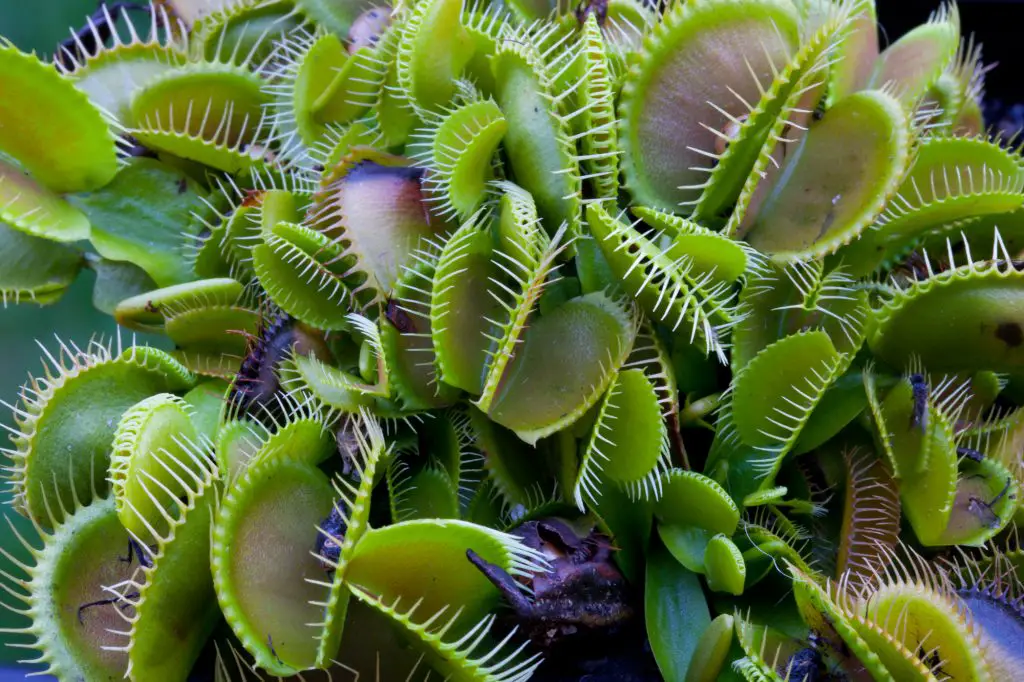
What To Feed A Venus Fly Trap
Unlike many other plants, a Venus flytrap cannot live on water and sunlight alone; you have to feed it. Their leaves, often referred to as their mouths, naturally have a chemical that smells really sweet to bugs and subsequently lures them in to become a meal.
Flies
The Venus flytrap does, in fact, enjoy eating flies. They are quick enough to be able to catch a fly before it has the chance to fly away.
Spiders
We may not like spiders crawling around our home, but the Venus flytrap can take care of that problem. They enjoy eating these creepy crawlers.
Crickets
Crickets are very easy to find inexpensively at most pet stores, and they make for one of the Venus fly trap’s favorite snacks.
Beetles
Your Venus flytrap would enjoy a crunchy beetle. You just want to make sure that the beetle isn’t too big, or else it’ll be too tough for them to digest it fully.
Grasshoppers
You might have to be careful feeding your Venus flytrap grasshoppers, as you don’t want it to hop away before they get a chance to close their leaves onto it. It’s recommended you use tweezers and rub the grasshopper onto their mouth, so they know to close it.
Mealworms or Bloodworms
The Venus flytrap likes bloodworms or mealworms that are hard, with exoskeletons. They aren’t fans of soft worms. These are often saved for Venus flytraps when they’re still young.
Just make sure that, before you feed your Venus flytrap one of these worms, you soak them in water to rehydrate them. You’ll have to massage their mouths to make them close onto these worms.
Distilled Or Rain Water
You don’t want to forget to give your Venus Fly Trap some water. You have to be careful about the type of water, however, to avoid too many minerals getting into the plant. Choose distilled or rainwater for the best results.
Unacceptable Food For A Venus Fly Trap
The Venus flytrap doesn’t need a varied diet. They are perfectly content feasting on the few bugs it likes. If you try to feed it something else, there’s a potential that you’ll end up harming the plant.
Meat
A Venus flytrap cannot properly digest meat, so it’ll end up just sitting inside its mouth. It’ll go bad to the point that it’ll rot, which can cause your plant to rot as well.
Human Food
Any food that we eat shouldn’t be given to a Venus flytrap. It’s not meant for them, and therefore, they can’t digest it. They won’t appreciate you sharing, either.
Ants
Ants are a little too small to offer anything beneficial to your Venus flytrap. If your plant lives outdoors, it’s possible they will eat ants on their own. However, it’s said that ants could potentially release bad chemicals into your plant’s mouths, which could cause them to rot.
Caterpillars
While the Venus flytrap does like caterpillars, there’s the potential for a caterpillar to eat its way out of the mouth before it’s broken down. Thus, it’s better to stick with a different insect.
Large Bugs
Only small bugs should be given to a Venus flytrap. Any bug that is over one-third of the trap’s size will not be broken down, and it will cause the plant to rot.
Dead Bugs
Dead bugs aren’t bad for the Venus flytrap, but they would much rather have a live bug. This is because the live bug’s motion will trigger those hairs on their mouth to let them know food is there, and the mouth will subsequently snap shut. You’d have to massage the mouth yourself with a dead bug to make it close.
Recap
The Venus flytrap is truly a fascinating plant and is like no other in the way it eats and moves around. They are particular plants, and they need to be fed on a certain regimen with their favorite food.
Unlike other plants, they also have a way of letting you know they want food, so you’ll be able to see how often you should feed a Venus flytrap based on the plant’s size and position.
It takes some research and particular care in order to give a Venus flytrap the longest life possible. As they don’t require a lot of food, you can focus on ensuring its climate is suitable and watch it dance happily for you after their snack.

